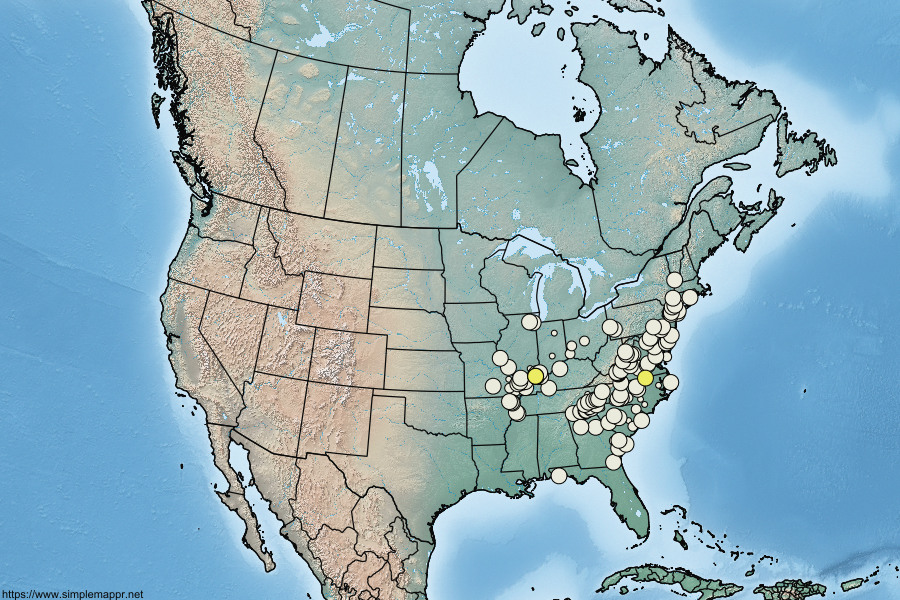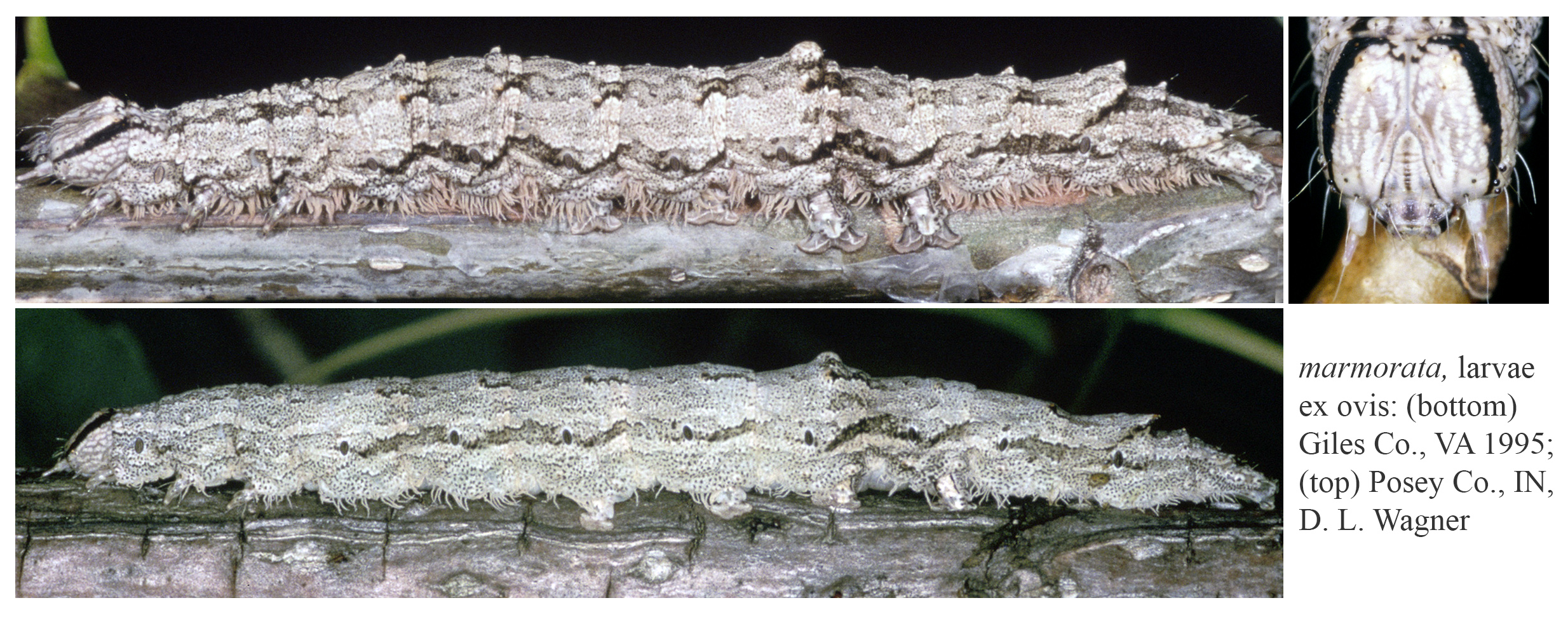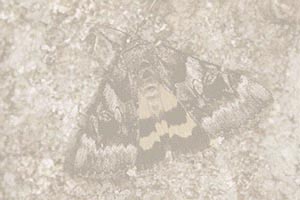 Catocala marmorata
Catocala marmorata
W. H. Edwards, 1864
A very large Catocala with a correspondingly very large larva. Overall habitus like a rumpled
amatrix,
body color light gray with varying broken dorsal, lateral, subventral lines; A5 with bulbous light-topped projection, modestly
delineated patch, A8 inflated; venter whitish with black spotting throughout; lateral filaments lush and
long; head capsule with broad and crisply delimited black bands on side, tapering toward ocelli, extending up to but not
strongly connecting on top, lobe faces
light gray with indistinct striping.
Wild larvae have not been taken in the field, but marmorata adults are associated with
hardwood swamp habitats containing only
Swamp Cottonwood (Populus heterophylla) in Indiana and Delaware. The distribution of
heterophylla is split, with populations centered on the Missisippi drainage and
then along the east coast and piedmont from North Carolina to New Jersey (with outlying isolated
disjunct populations
reaching Michigan and
Connecticut). This tree is not present in the Appalachians where marmorata also occurs, which
suggests an additional foodplant.

|


